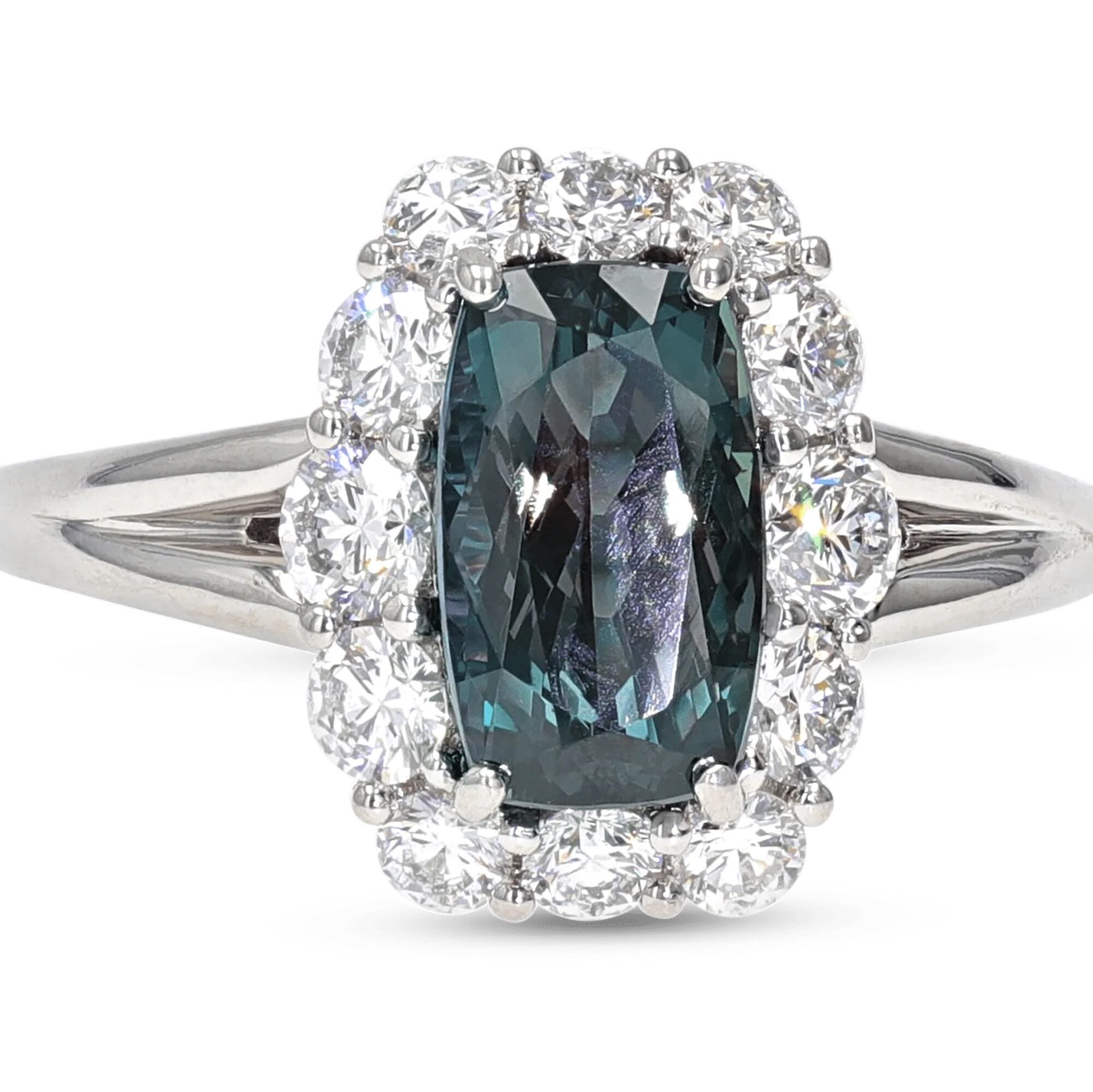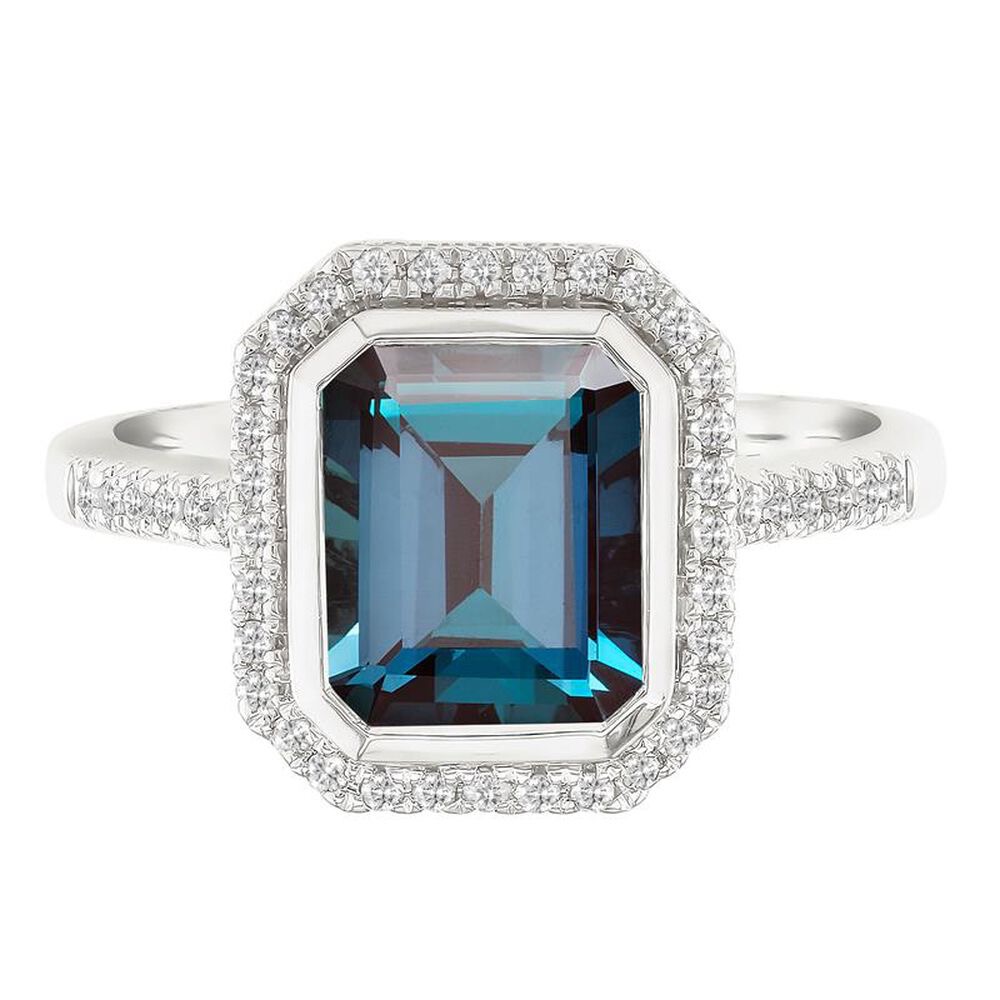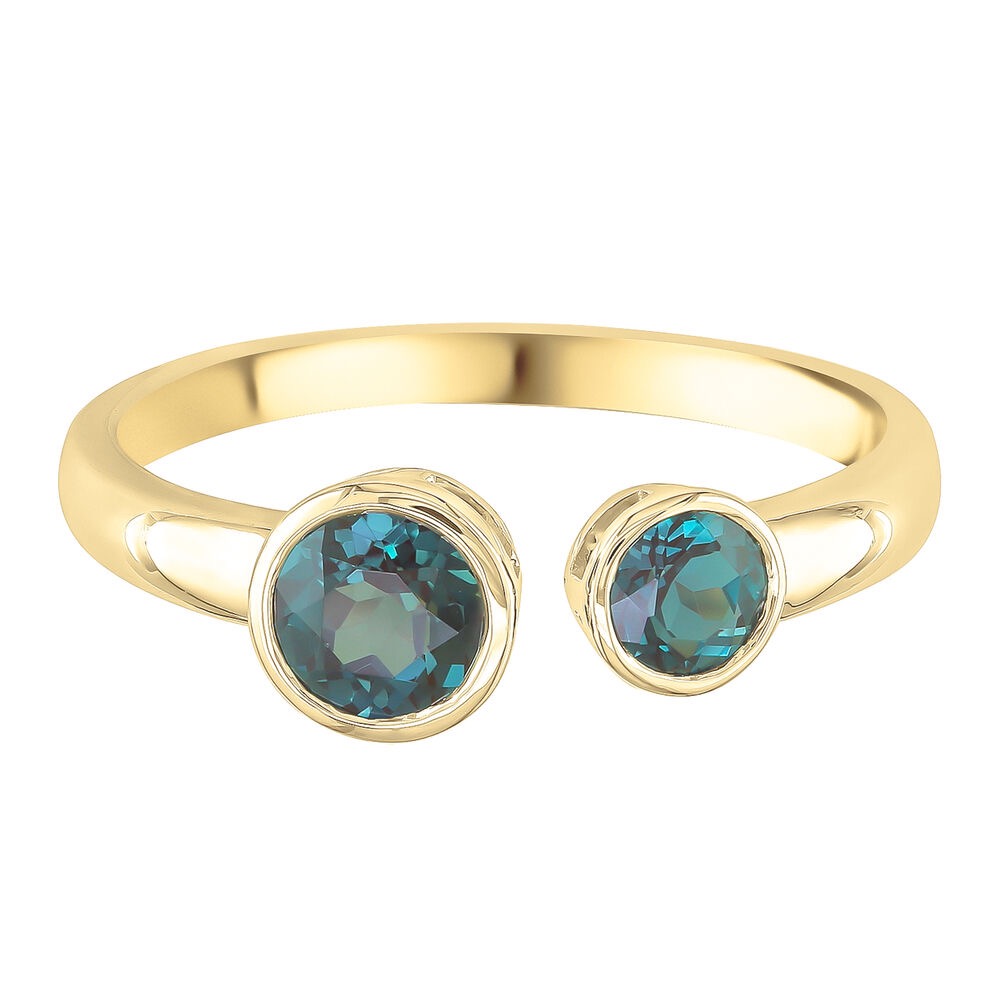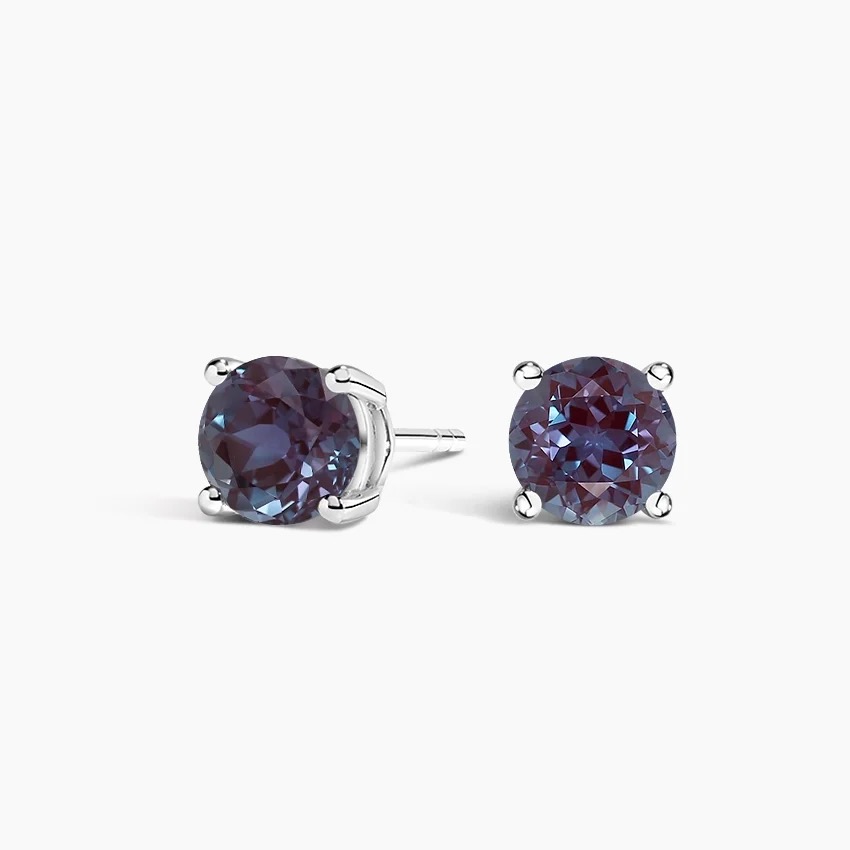Alexandrite: Natural vs Lab Created Alexandrite
Table of Contents
When choosing an alexandrite stone, carefully consider your priorities, as this rare and expensive gemstone can suit a wide range of goals when a buyer considers both natural and authentic laboratory created alexandrite. Value, history, ethics investment potential and availability differ widely for natural mined alexandrite and its chemically identical manmade twin.
Because natural alexandrite is found and mined in such very limited quantities, the price per carat of natural alexandrite is vastly greater than that of lab created alexandrite. As this natural alexandrite tends to be found in small carat weights ~ rarely is a specimen discovered of one carat or more ~ large natural alexandrites are even more rarely available, and their price per carat much greater than that of smaller stones. Beyond market dynamics there are ethical, historical, investment, and metaphysical elements that can be influential.
Be aware that many “alexandrites” sold today are not actual alexandrites, but synthetic imitation alexandrites: cubic zirconia, color change glass, or color change sapphire, for example. The chemical composition of a true lab created alexandrite is exactly that of a natural alexandrite; the lab gem is a genuine alexandrite ~ only the origin differs. These are discussed here.
Natural Alexandrite
Pros:
- Rarity and Exclusivity: Natural alexandrites are incredibly rare, especially those that show a distinct color change, adding to their exclusivity and mystique. Natural alexandrite has special associations with royalty and celebrities ~ the exclusivity factor is essential for natural alexandrite loyalists.
- Investment Value: Due to their rarity, natural alexandrites may hold or increase in value over time, making them a potential good investment.
- Natural Beauty and Uniqueness: Each natural alexandrite has a unique chemical makeup and history, which many believe contribute to its allure and intrinsic value. Some believe the energetic attributes of natural alexandrite to be superior to those of its lab grown counterpart.
- Historical Significance: Natural alexandrites have a rich history associated with Russian royalty that many people find appealing. Discovered in Russia in the late 1800’s, alexandrite was named to honor Russian Czar Alexander II.
Cons:
- Cost: Natural alexandrites can be prohibitively expensive, particularly high-quality specimens with a clear color change.
- Availability: Finding a natural alexandrite can be challenging, as they are rare and not always available on the market. Sizes found in nature are usually less than a carat.
- Environmental and Ethical Concerns: Like many natural gemstones, the mining of natural alexandrite can involve environmental degradation and ethical issues related to mining practices.
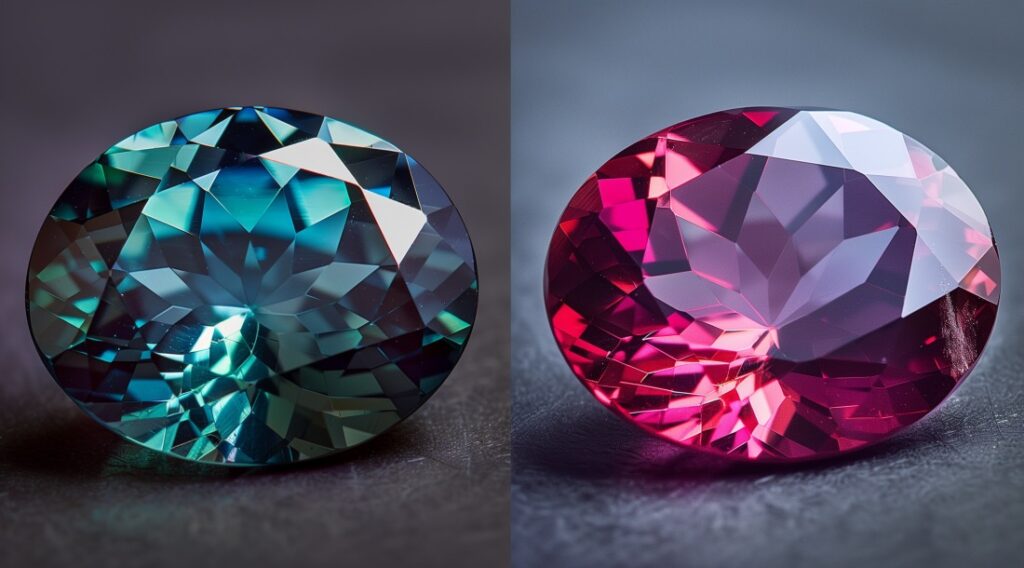
Lab Created Alexandrite
Pros:
- Affordability: Lab-grown alexandrites are significantly more affordable than their natural counterparts, making them accessible to a wider audience.
- Environmental and Ethical Benefits: These stones are produced with minimal environmental impact and without the ethical issues associated with mining.
- Quality and Availability: Lab-grown options are available in consistent quality and sizes, which are rare in natural stones.
- Color Consistency: They can be engineered to showcase the ideal color change effect ~ green in daylight and red in artificial light ~ consistently. Many sold are created in highly saturated deep blue purples and blue greens ~ difficult to find and acquire in a natural alexandrite ~ that are truly beautiful and desirable.
Cons:
- Perceived Value: Lab-grown alexandrites typically do not hold their value as well as natural stones due to their availability and manufacturing process.
- Emotional and Historical Appeal: They lack the natural history and unique story that comes with natural stones, which can be a significant factor for collectors and enthusiasts.
- Investment Potential: They are generally not considered an investment as their resale value is lower than that of natural stones. Natural stones will always fetch premium prices, especially as fewer and fewer are mined.
Pricing
These prices can vary significantly based on market demand, specific stone qualities, and the design and materials of the ring setting. The examples are mainly meant to give an idea of the relative values of stones of different qualities, as well as the relative expense of natural alexandrite stones compared to lab created alexandrites.
Pricing Tier Examples: Natural Alexandrite Stones
- High Quality: For top-quality natural alexandrite exhibiting a dramatic and clear color change from green to red, excellent clarity, and good cut, prices can range from $10,000 to $30,000 per carat or more. Exceptional pieces, especially larger ones over one carat, can fetch even higher prices, sometimes exceeding $50,000 per carat.
- Medium Quality: Good-quality alexandrites with a noticeable but not perfect color change, and moderate inclusions, typically range between $5,000 to $10,000 per carat. The extent and attractiveness of the color change still play a significant role in pricing within this range.
- Lower Quality: Lower quality alexandrite, where the color change is less pronounced or the stone has significant inclusions or less optimal cutting, may cost $1,000 to $4,000 per carat. These stones might not display the striking color change characteristic of finer specimens but are still valued for their rarity.
Pricing Tier Examples: Lab Created Alexandrite Stones
- High Quality: For top-quality laboratory-created alexandrite exhibiting a dramatic and clear color change from green to red, excellent clarity, and good cut, prices can range from $1,000 to $3,000 per carat. Exceptional pieces, especially those that closely mimic the color change and clarity of high-end natural alexandrite, can reach higher prices.
- Medium Quality: Good-quality lab-created alexandrites with a noticeable but not perfect color change, and moderate inclusions, typically range between $500 to $1,000 per carat. The attractiveness and distinctness of the color change play a significant role in pricing within this range.
- Lower Quality: Lower quality lab-created alexandrite, where the color change is less pronounced or the stone has significant inclusions or less optimal cutting, may cost $100 to $500 per carat. These stones might not display the striking color change characteristic of finer specimens but are still appealing due to their color and affordability.
Main Reasons People Choose One Over the Other
Choosing Natural Alexandrite:
- Historical and Emotional Value: Enthusiasts and collectors who value the unique history and rarity of gemstones often seek out natural alexandrites.
- Intrinsic Beauty: Those who believe in the intrinsic energies of natural stones often opt for natural alexandrite, valuing its natural formation and unique characteristics.
- Perceived Investment Value: Buyers looking for an investment may prefer natural alexandrite due to its potential to appreciate in value.
Choosing Lab Created Alexandrite:
- Value: Those who desire the beauty of alexandrite without the high cost often opt for lab-grown varieties.
- Ethical Considerations: Individuals concerned with the environmental and ethical implications of gemstone mining might choose lab-grown stones as a more sustainable and humane option.
- Consistent Quality: Lab-grown stones provide uniformity in color and clarity that can be difficult to find in natural stones.
Gemstone Certification
Whether you purchase a natural alexandrite or a lab grown gemstone be sure to ask for a certificate of authentication that will detail the properties of your individual gemstone and its origin. Reputable sources may be found here: Internationally Recognized Gemology Authorities.



